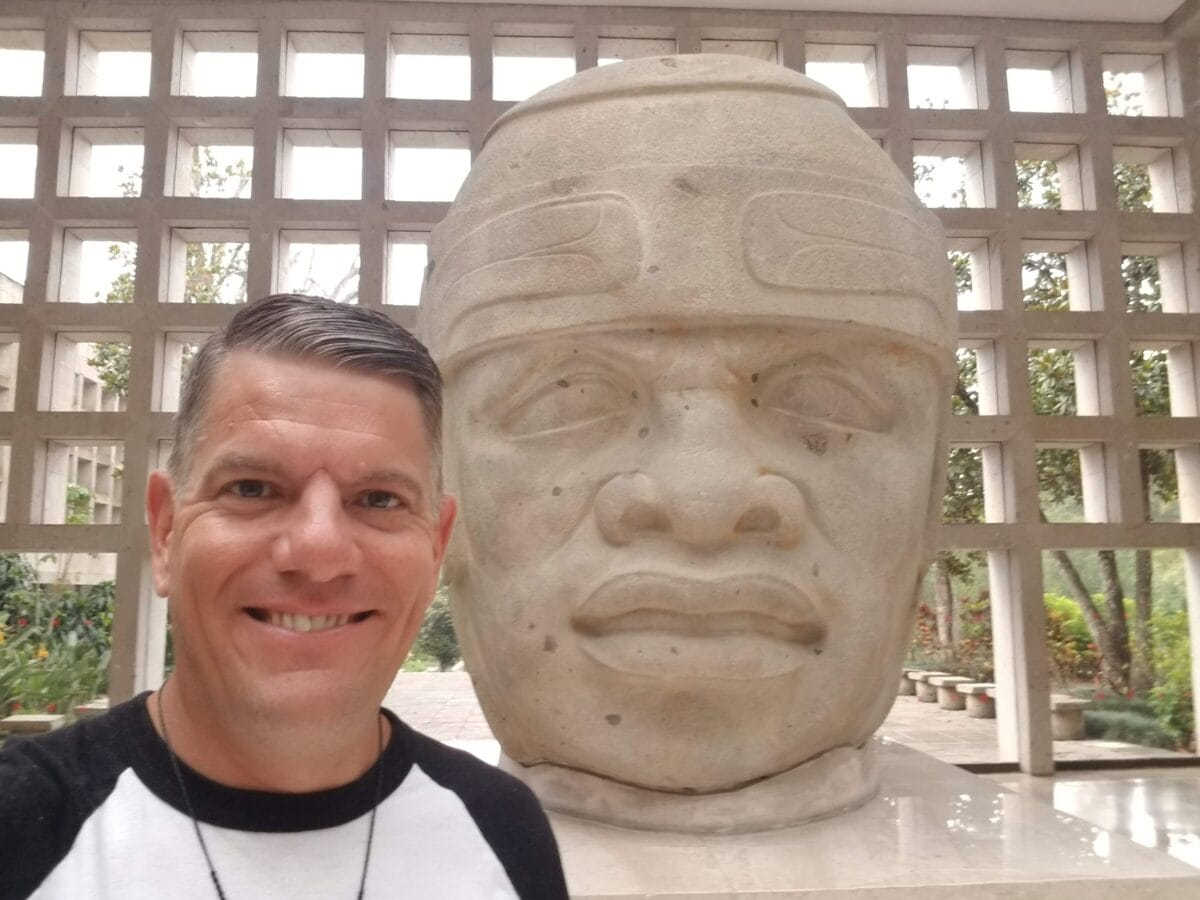Somatic therapy and psychedelics are proving to be mutually beneficial as the psychedelic revival evolves. Somatic therapy can unlock deeper levels of healing and trauma release inaccessible by psychedelics alone. And at the same time, somatic therapy can set the table for someone who is not quite ready for a psychedelic journey.
Whether they’re new to the psychedelic field or not, most people have a basic understanding of what psychedelics are and what they do. However, many people are unfamiliar with somatic therapy. Thus, even fewer understand the intersection between somatic therapy and psychedelics. Before exploring the interplay further, let’s address the obvious question first.

What is Somatic Therapy?
According to Harvard Health somatic therapy is “… a treatment focusing on the body and how emotions appear within the body. Somatic therapies posit that our body holds and expresses experiences and emotions, and traumatic events or unresolved emotional issues can become ‘trapped’ inside.”
Somatic therapy, or just simply ‘somatics,’ is a topic that covers significant breadth and depth. Somatics is not one thing, but many different training programs teach it, and unique practitioners practice it with distinct approaches.
Two notable therapists, Peter Levine and Bessel van der Kolk, specialize in trauma and psychedelics under the somatic umbrella.
Levine developed a type of somatic therapy called “somatic experiencing.” The therapy, he explains, is a body-oriented modality that helps heal trauma and other stress disorders.
“It is the result of the multidisciplinary study of stress physiology, psychology, ethology, biology, neuroscience, Indigenous healing practices, and medical biophysics,” Levine says.
Dutch psychiatrist, researcher and author Bessel van der Kolk has made significant contributions to the somatic therapy field as well. His book The Body Keeps the Score describes how a group of therapists and scientists struggled to integrate recent advances in brain science, attachment research, and body awareness into treatments that “can free trauma survivors from the tyranny of the past.” Van der Kolk’s work has brought much-needed attention to how trauma gets trapped or “stuck” in the body, and is often referenced in the psychedelic field.
Besides somatic experiencing, a variety of methods exist to address trapped trauma in the body. Some of them include body awareness, pendulation, titration and resourcing among others. So who might benefit from somatics?

Who Benefits From Somatic Therapy?
People suffering from anxiety, complicated grief, depression, PTSD, self-esteem problems and other challenges can find healing benefits from somatic therapy.
Often these unsettling feelings manifest in the body in crippling ways. These unwelcome feelings, anxiety and stress may lead to lack of concentration, sleep complications, muscle tension, stiffness, etc. Over a long period of time, these physical maladies put tremendous wear and tear on the body, and can lead to the manifestation of chronic pain and illness.
As van der Kolk says, “the body doesn’t lie.” These debilitating physical conditions are symptomatic of the underlying stuck or blocked psychic energy. So anyone with entrenched experiences, feelings or traumas causing corporal pain can benefit from somatic therapy. Somatic therapy works to disempower these emotions. But how do these unwanted emotions become unwelcome guests in the body?
How Animals Have an Advantage Over Humans
Levine made one of the biggest advancements in somatics by studying animals. By observing animals, Levine came to the conclusion that animals have an ability to discard or brush off psychic distress. Think of a dog shaking off water. Animals seem to have an innate ability to neutralize trauma after escaping a predator. Not possessing this ability would compromise their survival instincts and threaten an existential crisis. However, humans don’t appear to have the same set of skills.
Somatic therapy focuses on the nervous system as its foundation. The human nervous system does not respond like the nervous system of animals.
“Animals complete the whole threat cycle. They go through the whole thing. They discharge that energy,” Kara Tremain, ACC explains.
Bonnijane Monson, DPT concurs, and explains further. “You’re looking for saber-toothed tigers around you. You have to be aware of all the saber-toothed tigers in the area, because the saber-toothed tigers can potentially harm you. But if you’re looking for external saber-toothed tigers, you don’t care if you’re hungry. You don’t care if you’re sleepy. You don’t care about the signals happening in your body that are trying to tell you what you need because your biggest concern at that moment is safety. So we lose interoception which is the internal knowing and sensing of what we need and want. So what we teach in somatics is to increase interoception.”
In a way, somatic therapy teaches us to regain our animal instincts and reclaim our bodies again. We have to teach our bodies that we are no longer in threat. However, if a person is stuck in deep trauma, in a flight, fight, or freeze response for example, they may not benefit from other therapy types.

Where Somatic Therapy and Psychedelics Intersect
For some people with deep, embodied trauma, somatic therapy may be the skeleton key that unlocks it.
For example, a person may not be getting results from traditional psychotherapy. In a case like this, the body transforms into a psychic sentinel and does not allow passage to the origin of the pain.
“You can talk about it all day long, but your body is still going through the experience,” Monson says.
The nervous system is the ideal starting point for somatics, Tremain says.
“… You really can’t do the bigger, deeper work if you’re stuck in a trauma pattern.”
In this case psychedelics may not be the ideal solution – yet.
Undergoing somatic therapy may be a necessary pre-game step, leading up to a psychedelic experience. The need for somatic therapy shows up in psychedelic settings in slightly different ways.
- Somatic Therapy as a Psychedelic Precursor
Because most people are unfamiliar with somatic therapy, chances are a therapist will recommend it to them for the first time. Perhaps a traditional psychotherapist has encountered a blockage in someone that talk therapy can’t resolve. In this case, a psychedelically informed therapist might also deduce that the timing for a psychedelic journey is not right either.
“Unless there is a real orientation to the body, you can spend the whole psychedelic session in your mind, just processing things from a mind perspective. An orientation with the body changes things,” Tremain says.
Sometimes severe trauma can reduce the benefits of psychedelic medicine, despite the medicine’s potency. In this case, somatic therapy prior to a psychedelic session may help someone prepare for a journey. Tremain emphasizes that her goal is to get people to do somatic work before they engage in a psychedelic session.
- Somatic Therapy in Underground Psychedelic Settings
Many people attending underground psychedelic retreats and ceremonies may not know about somatic therapy. However, people with severe, nervous system-based traumas may still seek them out, and may not be aware that their body is keeping the score. Thus underground retreat leaders, practitioners, and guides, need to prepare for these scenarios and seek expert-level training to help support those who may come to the circle with unresolved somatic trauma.
Monson points out the risk stating, “With different memories or experiences are going to come sensations from the body. And if somebody is not prepared to experience the intensity of what is happening in their body, it can feel really scary and a lot of fighting and struggle can happen as a result of what’s showing up in a psychedelic experience.” Some may interpret this as a “bad trip” when in reality a tough experience may be an indication that a person needs somatic therapy. It boils down to a matter of comfort.
“If somebody feels more comfortable being present and can stay there a longer period of time, the amount of struggle is less and the integration afterward is much easier because they already know how to process that through a somatic approach,” Monson explains.

How Somatic Therapy and Psychedelics Complement Each Other
Somatic therapy and psychedelics can be like a training ground to the playing field of the psyche. As an individual undertakes a journey of deep, personal work, layers of the psyche peel back. This reveals more profound levels of psychic projects underneath. However, sometimes a person’s body isn’t quite ready for the psychedelic playing field.
“Somatics prepares someone to stay in their body and work through, or be with, whatever shows up,” Munson says.
Whether it’s emotional or physical pain, or different memories and experiences, somatics prepares a person to take on these challenging moments. The glamorization of psychedelics can mislead people to believe that challenging experiences are throwaways. In fact, these difficult experiences may provide the richest rewards.
A quick dip into a psychedelic-adjacent field reveals “the bad” often seeds and nourishes personal development. German philosopher, Friedrich Nietzsche proposed the idea of “post-traumatic growth.” He was way ahead of his time in 1888. He also aided the progress of psychology with his idea. Through the lens of post-traumatic growth, somatic therapy opens, sets and tends the psychedelic playing field.
“A big part of this work is learning to be with uncomfortable sensations and to be with discomfort. It’s about learning to be with discomfort so you can process it. The more you can be with it, the easier it is to process. The more you’re not over-responsive to something, the more settled your body is, you can actually see things and process things that come up in a psychedelic space,” Tremain explains.
In this way, somatic therapy gives a person the tools to graduate to the psychedelic big leagues, and artfully manage challenging experiences.
Somatics and Psychedelics: Unlocking the Treasure Within
The psychospiritual healing process often plays out like a locked treasure chest containing more locked treasure chests. Everyone has unique treasure chests, sizes, shapes, and locks requiring distinct keys to open. Somatic therapy provides another key to opening the next chest. Anyone with psychedelic experience knows how journeys can elicit profound visceral reactions. Without a body-centered approach to psychedelic journeys, a person may short-circuit their healing process and shortchange their full healing potential.


